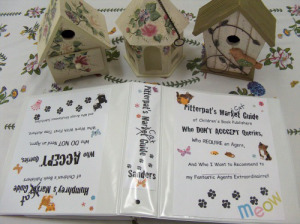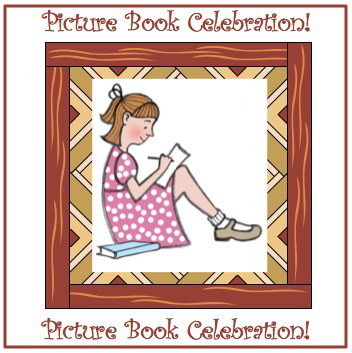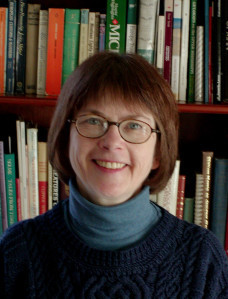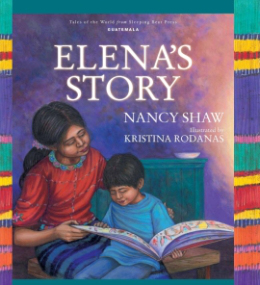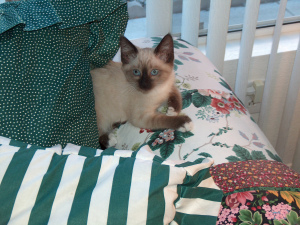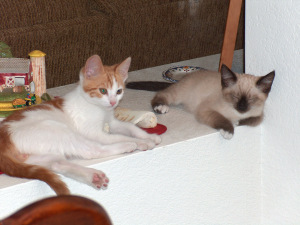Nancy I. Sanders's Blog, page 82
September 21, 2012
Agents: When Should You Look for One?
It’s actually good experience to go through the process of landing a contract at least once by yourself to know what an agent is supposed to do. It also puts you one step ahead of the rest. At one point, agent Rachelle Gardner posted on her blog that she had over 200 submissions she was considering, most of which were by unpublished authors. You can bet that anyone with published credits stood out from the slush pile.
It’s to your advantage to earn publishing credits before you contact an agent. How? Search your market guide. Look for publishers who say 50% or more of their product list is with first time authors. They’ll be open to hearing from you.
Once you experience some publishing success and know how signing a contract works, you can certainly try to acquire an agent. There are numerous benefits to having one, such as representation, constructive feedback, and legal advice.
Meet with various agents—look for conferences that offer private appointments—or get to know them better by reading their blogs. Interact with them by posting comments on their blog and get to know their personality. You might find that you really connect with them…or don’t!
If you’re a beginning writer and you’re sending out simultaneous submissions to publishers for your manuscript, include several agents in your mailing list as well.
An agent won’t just want someone who can write, however. Agents are on the lookout for writers who also have a platform. They know that it’s one thing to get a book published. It’s another thing to get it to sell. While you’re looking for an agent, also start building up your platform. Teach writer’s workshops, build a blog, and schedule book signings for the books you’ve already had published. Make an agent want you as much as you want an agent.


September 19, 2012
Agents: Market Guide
Everyone complains that it’s impossible to get a children’s book published these days because every publisher requires agented submissions. This simply is not true. Even the big houses send acquisitions editors to SCBWI conferences where they will pick up your manuscript if they find merit in it.
There are also numerous smaller houses who take unagented submissions. In fact, some publishers prefer not to work with an agent. They may not be able to pay fees that cover an agent’s expense. They like working with first time authors and have carefully prepared author’s packet to help with the learning curve.
So, if you’re looking for a publisher, create your own market guide like the one I’ve made for myself.
I made my own market guide.
I made one section of my market guide have pages of publishers who DO NOT REQUIRE agents.
I made the second section of my market guide have pages of publishers who REQUIRE an agent.
Here’s what you can do to make your own market guide:
Go through current market guides and find publishers who DO NOT say they only take submissions from agents. Then photocopy their page in your market guide and put it into YOUR OWN MARKET GUIDE. Keep these in alphabetical order.
Also, if you’re a beginning author, look for publishers from these who say that some of their books are by first time authors. This means they accept submissions from first time authors.
Making this guide of your own will help you feel much more empowered to submit manuscripts. Even if you have only 3-5 pages here in your very own guide, there are still 3-5 publishers who DO take submissions from authors and who you can study and target and submit to.
Also, if you are interested in working with an agent, either if you already have one or if you are going to look for one, create a section in your market guide for publishers who only accept agented submissions. It’s good to get to know these publishers if you hope to work with an agent.
In my guide, I made one section start from one side of my 3-ring notebook. Then I made the other section start from the other side. It’s like 2 guides in the same notebook with one being upside from the other.
Now, the reason this is a good kind of market guide to make for yourself is because for all those publishers that interest you but who only accept agents, you can put them here in one place if you start working with an agent. AND if you’re not yet working with an agent, you won’t get as frustrated looking for publishers in your very own guide of JUST publishers who don’t require agents.
For more tips on creating your own market guide to help you as you’re looking for an agent and looking at publishers who require an agent,
CLICK HERE.


September 17, 2012
Agents: Do You NEED One?
As I mentioned in my last post, I’ve worked with some top agents and I have writing friends who have top agents in the industry, so I keep my ear to the ground, so to speak, on that seemingly hidden world…the world of agents. I have a New York agent now. So if you have questions about agents, let me know and I’ll try to answer them in these upcoming posts where we’ll be talking about agents, especially for children’s writers.
First let’s start out by answering the all-important question: What is an agent?
In the world of writing, an agent is someone who takes your manuscript and submits it to publishers and tries to land a book contract for you. Usually, agents submit to publishers who require an agent, but not always.
Now here’s another question that’s very important to ask:
Do you need an agent?
Well, sometimes you do and sometimes you don’t.
Here’s a general guide:
Interested in Self-publishing? No.
Wanna write for the Educational Market? No.
Wanna write for the Magazine Market? No.
Wanna work with Traditional Publishers? Sometimes yes and sometimes no. Some of these publishers require an agent, some don’t.
Wanna target the Christian Market? Sometimes yes and sometimes no. Some of these publishers require an agent, some don’t.
Is there a different market you’re interested in? Let me know and I’ll tell you if you need an agent or not.


September 13, 2012
Finding an Agent
Thanks, Nicole, for sharing your hope of acquiring an agent.
I’ve actually had three agents over my career. Plus I’ve got lots of writing friends who have agents and some of these agents are the top in the industry.
So I’ve got some tips up my sleeve about how to acquire an agent.
Now, here’s my question for you Nicole and anyone else reading this blog. How would you like to LEARN more about getting an agent?
Method A
Would you like me to present some of the information here on my blog?
Method B
Would you like to schedule a one hour online workshop through anymeeting.com with me as I teach you steps you can take to acquire an agent? This costs about $25 per person and it includes question/answer time. People can join in from all over the world. We can have up to 100 people I think, but I’d probably limit it to a small group. You can see me for one hour as I talk with you and you can type questions into the chat field so I can answer them, too.
Let me know! Having an agent is essential if you really want to get published in the big publishing houses.

September 10, 2012
Honing Our Craft
Right now I’m launching full speed ahead on new book projects for the upcoming year. I typically take most of the summers off from writing to get recharged and renewed. This schedule started out because my husband is a teacher and takes the summers off, but over time it has become a real time of refreshment for me as a writer. Then, when September hits I’m off and running, typing my way from morning until later afternoon through book contract after book contract from September through mid-June. It’s how I earn my living as a writer.
I just finished a deadline for a middle grade novel contract and am now knee-deep in preparing a requested proposal for a nonfiction reference book for students in junior high and high school. Then I have a couple of picture book manuscripts due at my agent’s.
Yup. From fiction to nonfiction, picture book to novel, a children’s writer can find herself covering it all.
Along the journey, however, I take lots of time to practice writing exercises and polish my writing skills and hone my craft. So I thought it would be fun to share in upcoming posts some of the ways we, as writers, can work to improve our writing skills. This not only helps land more contracts but it helps guarantee better writing success.
There are a zillion topics I can cover in the days ahead here on my blog such as:
* crafting realistic dialogue
* what to write to introduce your character when he appears the first time in a scene
* how to incorporate sensory detail in nonfiction to make it read like fiction
But I thought it would also be fun to ask YOU if you have any topics you’d like to learn more about. Are there any specific writing skills you’d like to have exercises or worksheets on to help improve your writing?
So, while I’m getting some ideas of my own to move forward with and post here on my blog, let me know some of your ideas, too!

September 8, 2012
Picture Book Celebration
Thanks to all of you who joined in the picture book celebration that took place this summer here on my blog.
Picture books are a joy in my life and it’s great to know other people who love picture books, too!
Now summer is quickly fleeting. Fall is in the air! The leaves on our birch and apricot trees are getting a tinge of brown. Many of our garden flowers are starting to fade.
School is back in session so that means my teacher husband Jeff has gone back to work. And just what does that mean? Summer vacation is over for me as well. Now it’s back to writing full time.
So stay tuned! There’s a lot going on in the world of writing. And we’ll be talking about lots of fun stuff here in the days ahead.

September 5, 2012
Author Interview: Nancy Shaw
Meet Author Nancy Shaw!
Blog: Nancy Shaw Books
Website: Children’s Author Nancy Shaw
E-mail: Contact through website’s mailbox
Bio:
Nancy Shaw is the author of Raccoon Tune, Sheep in a Jeep, and six other sheep adventures. Her books have received IRA/CBC Children’s Choices citations, School Library Journal Best Books of the Year listings, the Oppenheim Toy Portfolio Platinum Book Award, Parenting’s Reading Magic Award, and Parents magazine Best Books of the Year listings, among other honors. She gives talks at schools, libraries, and conferences.
She was born in Pittsburgh, Pennsylvania, grew up in Midland, Michigan, and holds degrees from the University of Michigan and Harvard University. She and her husband live in Ann Arbor, Michigan, and have two adult children. Her first book, Sheep in a Jeep, got started when they were young, after reading animal rhymes on a car trip. Elena’s Story came from a trip she and her husband made to visit their daughter in Guatemala.
Featured Book:
Elena’s Story
by Nancy Shaw
Illustrated by Kristina Rodanas
Published by Sleeping Bear Press
Elena, who speaks the Mayan language Mam at home, struggles to practice reading and Spanish for school, while helping with the family chores. When she shares a picture book with her little brother, her mother gives Elena the job of being the reader.
Interview:
Q: Describe a highlight for you personally while you were writing this book.
A: When I first put this story together, I sent it to my daughter, who was working in forestry as a Peace Corps Volunteer. She read her Spanish translation of it at a meeting of municipal foresters from the area, and lots of them came up to her afterwards and said they loved it, and would like a copy. When she told me that, I felt that this story really should be a book.
Q: Describe part of the research process it took to write this manuscript.
A: The story came to me after I got home from Guatemala. It needed to be anchored in what I remembered–such as the corn planting we saw in mid-April, just before the rainy season; or the parents going to school to hear grade reports. If I’d thought on the trip that I would want to set a story here, I’d have been snapping pictures of cooking, classrooms, and gardens. My daughter filled in with photos and answers as she finished her Peace Corps stint. After she returned to the U.S., she asked her Guatemalan friends to tell us, as the story progressed, what was authentic, and what might be a bit off.
The process was more so with illustration, because the details are so specific–the way a flue comes out of a stove, the way a baby is tied on a mother’s back, the shapes of hoes and water jugs. I provided some photos we’d taken. I also found some Internet sources, including a YouTube that Peace Corps Volunteers had made in a neighboring area; and Kristina Rodanas found other visual references.
Q: Share the journey you’ve taken as a writer.
A: I learned to read easily when I was a kid. I have vivid memories of Ellen Tebbits, Half Magic, Mrs. Piggle-Wiggle, and Uncle Scrooge Comics. Enjoying what I read made me want to write. When I read to my children, it was the funny books they wanted to hear again and again.
The sheep stories that came from playing with sounds suited that mood, and were useful to speech and reading teachers as well, since they used predictable sounds to tell zany stories.
The more I read about early learning, the more I wanted people to know how important that early connection with stories is. When I met kids who hadn’t enjoyed the story connection with printed matter, this non-zany story wanted to be written.
Q: What is one word of advice you received as a writer that you would like to share with others?
A: Respect your audience.

August 29, 2012
Picture Books and Poetry
It’s exciting when famous magazines like Highlights feature a poem by Jack Prelutsky! He’s the children’s poet I’ve studied as I’ve read and referred to the book called The Complete Idiot’s Guide to Writing Poetry!
So, one day when we went to the beach, I took along my poetry journal where I explore writing exercises that this book recommends.
I wanted to write a little children’s poem about the beach using the sense of taste. Here’s what I came up with as Jeff and I sat on the sand, tasted the salty spray of the waves pounding the shore, and watched little children digging sandcastles with their buckets.
Ocean Picnic
Salt on my pretzels
and salt in the sea.
Sand in my sandwich
and sand on me!

August 27, 2012
Picture Books and Poetry
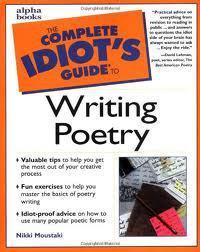
The Complete Idiot’s Guide to Writing Poetry
by Nikki Moustaki
Moustaki recommends that we keep multiple journals if we want to write poetry. One reason is to keep journals handy so that wherever we are, if the poet’s muse strikes us, we can jot down our poetic inspirations.
Another reason she recommends this is to keep journals for different topics. One about fears, one about daily activities, one about humor, and so on.
So I have various writer’s journals I keep. I also keep a poetry journal. It’s fun to have this journal! I write down little snippets of word phrases that go together, short lists of rhyming words, and brainstorming ideas for children’s poetry. One of the poems actually gelled. It’s short, but so are many of Jack Prelutsky’s in his book, SOMETHING BIG HAS BEEN HERE. Here’s a poem I wrote about our cats when they were kittens.
KITTENS
The couch is a mountain for kittens to climb,
and under the chair is a cave.
The plant is a jungle with long swinging vines.
The tub is an ocean with waves.
I’m having fun with my journals…do you have any writing journals you’re writing in this summer?

August 24, 2012
Picture Books and Poetry
I’m having fun learning about poetry and exploring writing poetry this summer as I work on my writing exercise for Red Sings From Treetops.
This past year, I finished reading THE COMPLETE IDIOT’S GUIDE TO WRITING POETRY.
I especially enjoyed the section that teaches about imagery and how to write it.
I wanted to just start writing some sample poems as the book suggests.
But I was drawing a blank.
So I started reading children’s poetry by Jack Prelusky. And I put on a children’s CD of Robert Louis Stevenson’s poems set to music.
Then I tried my hand on a poem after reading Prelusky’s hilarious poem, “My Neighbor’s Dog is Purple.” It’s all about his neighbor’s dog, but ends with the explanation that before his neighbor painted his pet purple, it was actually an alligator. So here’s my poem:
MY UNCLE OWNS AN AARDVARK
My uncle owns an aardvark.
My aunt has a kangaroo.
My cousins have three elephants
and even a zebra, too.
They have a cage for the aardvark.
Their zebra stays in the shed.
The kangaroo leaps all over their yard,
but the elephants sleep in their bed!
They let me play with the aardvark
and ride the elephants, too.
But when I go to their house,
I feel like I’m at the zoo.

Nancy I. Sanders's Blog
- Nancy I. Sanders's profile
- 76 followers


